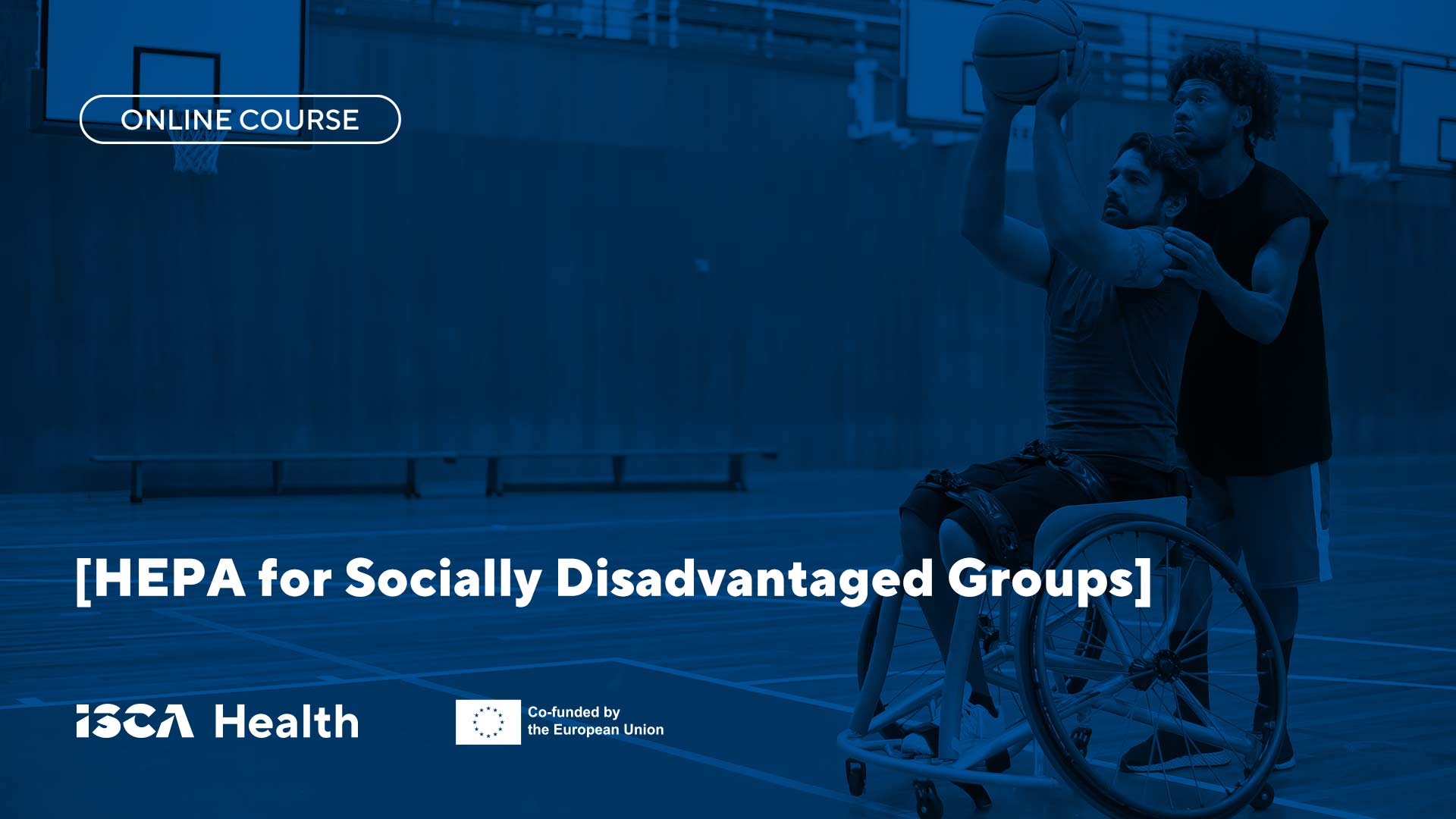Module 5: How do we ensure that socially disadvantaged groups have access to HEPA?

To raise the bar when it comes to our future generations’ health and wellbeing, we must target all citizens and ensure that being physically active becomes a normal part of life for everyone. Indeed, if health-enhancing physical activity (HEPA) programmes are meant to promote a healthy lifestyle for all, then organisations have a responsibility to provide services and support for all. All groups and populations, regardless of their socioeconomic status, should have equal access to HEPA opportunities.
Yet, there is extensive evidence that health promotion routinely benefits those who are already the most socioeconomically advantaged. In fact, there are notable differences in the physical activity levels of subgroups coming from different socioeconomic and cultural backgrounds.
Therefore, engaging socially disadvantaged groups, hard-to-reach populations and those with a lower socioeconomic status in HEPA programmes can be challenging due to various factors including their access to facilities, motivation, physical capabilities, lack of knowledge about where they can participate in recreation, cost and other circumstances. These groups are often completely omitted or under-represented in general population and preventive research, making the development of specific programmes even more challenging. Moreover, socially disadvantaged groups are often relegated to unsafe, underserved and underdeveloped areas that further limit their access to physical activities.
Socially disadvantaged groups and hard-to-reach populations need targeted and tailored HEPA initiatives that take into account their cultural contexts and everyday circumstances. Therefore, the objective of this module is to guide organisations in developing specifically tailored HEPA programmes for socially disadvantaged groups. HEPA programmes might also play a pivotal role in facilitating the social integration of these specific groups, and therefore should be seen not only as the final objective, but also as means to foster social inclusion.
Module 5 of 
🔹 Understand the specifics of socially disadvantaged groups (barriers & motivations) and the concept of inclusive organisations
🔹 Develop the skills and techniques to connect with individuals and welcome them into adapted and inclusive sport and physical activity
🔹 Collaborate with organisations across sectors to become more inclusive and reach diverse participants
Glossary of Key Terms
What do we mean by socially disadvantaged groups?
The definition of socially disadvantaged groups is still subject to controversy and can encompass a lot of different realities. There is one thing, however, that features in every definition of the concept: social disadvantage stems from circumstances beyond their control.
As per the WHO Regional Office for Europe definition from 2011, “Social disadvantage relates to socioeconomic aspects such as income, employment, education and socioeconomic status; to socio-cultural aspects such as gender, ethnicity, religion, culture, migrant status and social capital; socio-geographical aspects such as living in a deprived neighbourhood; and to age.”
For the purpose of this module, we will define “socially disadvantaged groups” as people who are in a difficult situation and are in a disadvantaged social position due to the low state of nature, economy, society and culture, and without regard to their individual qualities. In practical terms, socially disadvantaged individuals have less access to opportunities, activities, or roles that others take for granted. It is also important to keep in mind that the same person may belong to several groups at the same time.
Migrants and refugees, homeless people and street children, prostitutes, and non-income earning people low-income earners are among these socially disadvantaged groups. In some contexts, so, too, are women and girls.
What is the difference between a migrant and a refugee?
A migrant is any person who is moving or has moved across an international border or within a State away from his/her habitual place of residence, regardless of (1) the person’s legal status; (2) whether the movement is voluntary or involuntary; (3) what the causes for the movement are; or (4) what the length of the stay is. IOM concerns itself with migrants and migration‐related issues and, in agreement with relevant States, with migrants who are in need of international migration services.”
Source: International Organization for Migration – IOM, 2018
A refugee is someone who fled his or her home and country owing to “a well-founded fear of persecution because of his/her race, religion, nationality, membership in a particular social group, or political opinion”, according to the United Nations 1951 Refugee Convention. Many refugees are in exile to escape the effects of natural or human-made disasters.
What is an inclusive organisation?
In this module you will hear and read about the concept of “an inclusive organisation”. For the purpose of this course, an inclusive organisation is defined as an organisation which values, involves and respects all its stakeholders, enabling them to their reach their full potential.
In an inclusive organisation, the culture is such that it inculcates a climate in which respect, equity, and the positive impacts of differences are all cultivated.
Echoing the saying “nothing about them without them”, an inclusive organisation also incorporates the needs, assets and perspectives of its target groups into the design and implementation of its activities. In short, inclusion does not just happen. It requires proper integration, support and care for those diverse groups. One of the key elements to be provided in an inclusive organisation is a safeguarding environment.
What is safeguarding?
Safeguarding refers to the measures implemented to protect the health, wellbeing and human rights of individuals, which allow people to live free from abuse, harm and neglect. Just like Dr Donna de Haan, known as The Diversity Doctor, we believe “every space we enter should be a safe space for everyone”.
About the contributors
| Name | Profession | Organisation | Country |
| Paolo Emilio Adami🔗 | Sports Medicine Physician, Medical Manager | World Athletics | 🇮🇹 |
| Prof Niamh Murphy🔗 | Senior Lecturer and Leader of the Centre for Health Behaviour Research | South East Technological University | 🇮🇪 |
| Vivienne Holt🔗 | Head of International Operations | Youth Sport Trust International | 🇬🇧 |
| Dusan Pjevac🔗 | Sport and Health Development Officer | Azur Sport Santé | 🇷🇸 |
| Robert Benyhe🔗 | International Project Manager | Hungarian Leisure Sport Association | 🇭🇺 |
| Zakayo Wandolo🔗 | Co-Founder & Community Manager | Right2Score | 🇧🇪 |
Let’s get to the core of the content.
